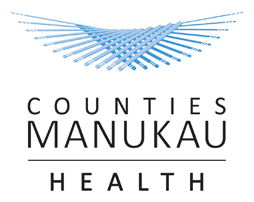
22 March 2019
Marie Daly
NZ Rural Hospital Network Executive Committee
E-ma
il: [FYI request #9689 email]
Dear Ms Daly,
Official Information Act (1982) Request
I write in response to your Official Information Act request, dated 27 February 2019. You have
requested the fol owing information.
1. For each of the past three years (ending June 2016, June 2017 and June 2018), what was the
DHBs Rural Adjuster funding component of the Population-based Funding Formula (PBFF) funding
pool?
2. Does the DHB fund and provide rural hospital services?
If yes, continue to answer questions 2.1, 2.2 and 2.3. If no, go to question 3
2.1 Provide the fol owing information about the rural hospitals in your DHB. If there are
none, please report this.
•
Name or location of hospital
•
List of services the hospital provides
•
The business structure of the hospital (e.g. DHB owned and operated / NGO or Iwi
owned and operated)
• Annual Budget
2.2 How is the annual budget for each of the rural hospitals listed in the table in 2.1 set?
2.3 How does the DHB apply the annual rural adjuster funding to the benefit of each of the
rural hospitals listed in the table in question 2.1?
3. Does the DHB fund and provide rural community services?
If yes, continue to answer questions 3.1, 3.2 and 3.3. If no, go to question 3
3.1 Provide the fol owing information about the rural community services in your DHB. If
there are none, please report this.
•
Location of services
•
List of Community services in each location
•
The business structure of the service provider (e.g. DHB owned and operated / NGO
or Iwi owned and operated)
•
Annual Budget.
3.2 How is the annual budget for the community services listed in the table in 3.1 set?
3.3 How does the DHB apply the annual rural adjuster funding to the benefit of each of the
rural community listed in the table in question 3.1?
Counties Manukau District Health Board
19 Lambie Drive, Manukau, Auckland 2104 | Private Bag 94052, Manukau, Auckland 2241
T: 09 276 0000 | cmdhb.org.nz
4. For each of the past three years, under each of the components of the Rural Adjuster, quantify
the al ocation of Rural Adjuster funding through the DHBs contracts, with its contracted providers
or Service Level Al iance Teams.
• Small hospital facilities
• Community services
• Offshore Islands
• Travel and Accommodation
• Inter hospital transfers
• Governance
• Rural GP/PHO payments
5. Does the DHB include reporting requirements specific to the use of rural adjuster funding in its
contracts with service providers whose contract includes rural adjuster funding.
If yes, provide a list of the reporting requirements included in the DHB contracts with these
providers.
Our responses for CMDHB are set out below each question:
1. For each of the past three years ending June 2016, June 2017 and June 2018 what was the
DHBs Rural Adjuster funding component of the PBFF funding pool?
A Population-Based Funding Formula (PBFF) is used to distribute the bulk of the funding share of
Vote Health to District Health Boards, based on DHB demographic profiles. The Ministry of Health
(MoH) are responsible for the al ocation methodology for the PBFF, and this level of allocation is not
specified in their funding notifications to DHBs. PBFF does not determine the overal level of funding
to a DHB, nor how DHBs spend it.
A “
Population-based Funding Formula (PBFF) Review 2015 - Technical Report” outlined the rationale
and weighting each component has within the PBFF formula.
•
https://www.health.govt.nz/publication/population-based-funding-formula-review-2015-
technical-report
At the 2015 review, the total funding allocation for rural adjuster to the entire DHB sector was
$169M. This was then al ocated via a capitation allocation model, with each DHB was assessed under
three criteria;
1. Weighted density of rural population,
2. Weighted travel times from a base hospital, and
3. Weighted travel to a tertiary hospital.
As a result of that methodology, in 2013/14 terms, the CMDHB allocation of the rural adjuster was
0.3% (or $0.5M). This level of information was not provided to DHBs in subsequent years by the
Ministry of Health, therefore we do not hold this information.
The Ministry of Health - DHB funding team are best placed to provide further details on the PBFF
methodology.
Page 2
2. Does the DHB fund and provide rural hospital services?
No. Counties Manukau DHB does not fund or provide rural hospital services. Services provided in
Pukekohe Hospital are not considered to be truly rural, due to the close proximity to major urban
areas (less than an hour).
3. Does the DHB fund and provide rural community services?
Yes, community services are funded, and provided by the DHB in the rural areas of the Franklin (i.e.
Port Waikato, Waiuku, Tuakau and Mangatangi), and Eastern (i.e. Clevedon, Kawakawa Bay and
Orere Point) localities in our district. Services provided in the Pukekohe centre are not considered
rural, as noted above.
3.1. Provide the fol owing information about the rural community services in your DHB.
If there are none, please report this.
•
Location of services
•
List of community services in each location
•
The business structure of the service provider (e.g. DHB owned and operated / NGO or
Iwi owned and operated)
•
Annual Budget.
DHB CM Health Provided Services:
A range of DHB services are provided in homes in the rural areas of the Eastern, and in the Franklin
localities. These include:
• Community health and nursing services;
• Al ied health services;
• Rehabilitation services;
• Palliative care;
• Mental Health services;
• Needs Assessment and Service Coordination (NASC) services for those over 65 years or
assessed as eligible;
• Maternity, Wel Child and Outreach immunisation services, and
• Healthy Homes and SmokeFree services.
These are services are part of integrated DHB specialist services delivered to our entire community,
irrespective of their residential locations. The annual budgets for services provided by the DHB are
not determined or targeted by rurality, and none of these services are provided exclusively for rural
communities, therefore we do not hold specific budget information on services in rural locations.
DHB Funded / Contracted Services:
There are a range of providers that have contracts to deliver services, which include for some of our
rural communities, as part of wider service contracts with the DHB. These are providers are described
below.
For Counties Manukau DHB, there are three General Practices that are identified as rural.
Information regarding the additional funding of rural general practices can be found in the national
PHO Services Agreement.
Page 3
•
https://tas.health.nz/dhb-programmes-and-contracts/primary-care-integration-
programme/primary-health-organisation-service-agreement-amendment-
protocol/#Agreements
Service
Location of Rural Services
Business Structure
The Kawakawa Bay - Orere Health Clinic – Eastern locality -
NGO
Practice Nursing Services:
Kawakawa Bay/ Orere Point
General Practice - Tuakau Health Centre:
Franklin locality -
Privately owned rural
Tuakau
general practice
General Practice - Waiuku Health Centre: Franklin locality -
Privately owned rural
Waiuku
general practice
General Practice - Pokeno Family Health: Franklin locality -
Privately owned rural
Pokeno
general practice
Integrated Whaanau Ora Services -
A range of rural locations in the
Iwi Provider / Charitable
Whaanau Oranga:
Franklin locality, including at local Trusts
•
Marae.
Huakina Development Trust
•
Health Through the Marae – Te
Whakaorangatanga o Nga Tangata
•
Port Waikato Community Health and
Support Services Trust
Rural Outreach Nursing Services
Three rural Marae in the Franklin Charitable Trust
Contract:
locality:
•
Huakina Development Trust
• Mangatangi Marae
• Ng Hau E Wha Marae
• Ooraeroa Marae
These contracts are all for community services that are wider than solely in rural area, and we
therefore do not hold annual budget information of the components for rural communities.
There are also a number of contracted NGO providers working in the Counties Manukau community,
who may deliver services at home if required, which could include rural homes. These providers are
funded on a ‘whole of district’ basis.
These include:
• Hospice services;
• Mental health services;
• Māori and Pacific health services;
• Aged or Need-related Community Support providers (via NASC assessment for personal
cares, household management, carer support and respite support), and
• B4 School Checks.
Page 4
We are willing to provide further information of these services, if required; noting that they work
across the entire Counties Manukau district. There is publicly available information on our website:
https://countiesmanukau.health.nz/our-services/
3.2. How is the annual budget for the community services listed in the table in 3.1 set?
The annual budget for these community services is based on historical need, with inflation and
population-based increases applied annual y. The annual budget setting process for services across
the DHB is based on a complex interaction of forecasting activity for each service, matching demand
to capacity so that services have the resources to meet demands, and assessment of growth in
demand, costs, the opportunities from alternate models of care, and the impact of other
developments and requirements across the health system. As new initiatives are developed and
implemented, the budgets are adjusted accordingly.
3.3. How does the DHB apply the annual rural adjuster funding to the benefit of each of the rural
community listed in the table in question 3.1?
The rural adjuster is an input into the DHB’s PBFF allocation, rather than a funding line. There is no
‘dedicated’ funding, exclusively for rural services in this PBFF model. The DHB’s role is to al ocate all
resources to provide the best possible health outcomes for the entire Counties Manukau population.
The provision of community services closer to/ in the homes where our rural community resides is
one of the ways we achieve this objective. As noted above, within the national PHO Services
Agreement, there is additional funding for rural general practices, which recognises the issues they
address.
4. For each of the past three years, under each of the components of the Rural Adjuster, quantify
the al ocation of Rural Adjuster funding through the DHBs contracts with its contracted
providers, or Service Level Al iance Teams.
•
Small hospital facilities
•
Community services
•
Offshore Islands
•
Travel and Accommodation
•
Inter hospital transfers
•
Governance
•
Rural GP/PHO payments
Counties Manukau DHB does not specifical y al ocate rural adjustor funding under the above
components (see 3.3 above). Additional rural funding is provided to rural general practices, as per
the national y agreed PHO Services Agreement, noted above.
5. Does the DHB include reporting requirements specific to the use of rural adjuster funding in its
contracts with service providers whose contract includes rural adjuster funding.
No, CMDHB does not include specific reporting requirements for the use of Rural Adjuster funding in
contracts with service providers.
Page 5

I trust this information satisfactorily answers your query. If you are not satisfied with this response
you are entitled to seek a review of the response by the Ombudsman under section 28(3) of the
Official Information Act.
Please note that this response or an edited version of this may be published on the Counties
Manukau DHB website.
Yours sincerely,
Fepulea’i Margie Apa
Chief Executive
Page 6


